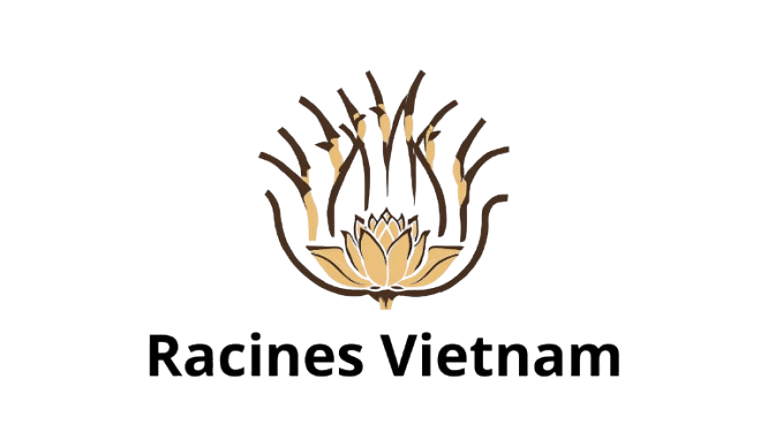“A blog created by an adopted Franco-Vietnamese for all those seeking to reconnect with their origins.”
Vietnam Travel Tips for French-Speaking Travelers | What to Know Before Your Trip
Planning your trip to Vietnam? Discover essential tips, cultural insights, and hidden gems for French-speaking travelers. Travel smart and experience Vietnam fully!
3/5/20253 min read


My Experience as a French-Speaking Traveler in Vietnam: What I Wish I Had Known Before Leaving
Traveling to Vietnam was one of the most transformative experiences of my life.
As a French-speaking traveler, I was filled with enthusiasm, curiosity... but also a few misconceptions.
Today, with hindsight, I want to share everything I wish I had known before traveling to Vietnam, this incredible Southeast Asian country: practical tips, cultural surprises, and unforgettable memories for tourists and passionate travellers.
1. Language: English Is More Useful Than French
Before leaving, I thought that French, a legacy of colonial Indochina, would ease communication.
Common mistake: although French is still culturally respected, it is rarely spoken today, especially outside major cities like Hanoi, Da Nang, or Ho Chi Minh City.
What to know:
English is more widely spoken, but not everywhere.
A few words of Vietnamese ("Xin chào", "Cảm ơn") make a huge difference.
Smiles and respectful gestures often speak louder than words.
Practical tip: Download an offline dictionary before your travel to Vietnam.
2. Respect and Hierarchy: A Core Value
In Vietnam, social hierarchy is omnipresent.
Respect for elders, teachers, and authority figures is fundamental.
What I wish I had known:
Always greet elders first in any group.
Use both hands to offer or receive something.
Avoid raising your voice to prevent "loss of face."
Reflection: "Respect is the key that opens all doors." (Vietnamese proverb)
3. Vietnamese Cuisine: Beyond Pho and Noodle Soup
I left imagining only Pho and Banh Mi... What a mistake.
Vietnamese food is an ocean of incredible flavors.
What surprised me:
Each region has its specialties: seafood from Southern Vietnam, spicy dishes from Hue, countryside meals in Trang.
Meals are moments of respect and sharing, deeply connected to Vietnamese culture.
Local noodle dishes and rice specialties highlight how strongly the countryside and rice fields influence daily life.
Must-tries: Bun Cha (Hanoi), Cao Lau (Hoi An), Banh Xeo (Saigon).
4. Transportation, Visas, and Daily Life
Although card payments are growing, cash remains king.
What to plan:
Always carry small denominations (10,000, 20,000 dong).
Arrange your visas in advance; either through the Vietnamese consulate, visa-on-arrival, or official e-visa websites.
Tailor your itineraries carefully depending on your length of stay and season.
Confirm transportation: buses, motorbikes, day-trips.
Beware of scams involving taxis and cyclo rides in tourist areas like Ben Thanh Market.
For foreigners planning a longer time in Vietnam, understanding visa extensions is crucial.
5. Unmissable Experiences in Vietnam
Ha Long Bay and Northern Vietnam
Sailing across the dramatic limestone landscapes of Ha Long Bay (a UNESCO World Heritage Site) is unforgettable.
Adventurers can enjoy kayaking or even trekking around Cat Ba Island.
The rice terraces and mountainous landscapes of Northern Vietnam offer exceptional opportunities for trekking and immersion in authentic villages.
Central and Southern Vietnam
Discover Hue and its Imperial City, a celebrated UNESCO World Heritage site, and admire the old streets of Hoi An, another jewel of Vietnamese heritage.
Explore the vibrant beaches of Da Nang before heading south.
The Mekong River and Mekong Delta open up a unique world of floating markets, lush paddies, and tropical countryside life.
Visiting the bustling city of Ho Chi Minh unveils history at the Reunification Palace, a symbol of the Communist era, and remnants of the Vietnam War with the legendary Cu Chi Tunnels.
For travelers seeking cross-border adventures, combining a Vietnam and Cambodia trip (or Cambodia and Vietnam itineraries) offers the chance to explore the marvels of Angkor Wat and experience deep Khmer culture.
6. Emotional Preparation: Vietnam Will Transform You
Vietnam is raw, humbling, and transformative.
From the paddies of the north to the beaches of the south, every corner teaches you patience, humility, and resilience.
What I felt:
A profound connection to people, nature, and history.
A new appreciation for simplicity and resilience.
A desire to reap every moment as a precious lesson.
Key takeaway: Vietnam doesn’t adapt to you. You adapt to Vietnam — and that change becomes part of you.
7. Final Tips for Travellers
Respect the many pagodas, temples, and sacred sites.
Always plan your Vietnam visa or visa-on-arrival ahead.
Work with a trusted tour operator to create your own tailor-made travel experience.
Include World Heritage Sites like Ha Long Bay, Hue Imperial City, and Trang An in your itinerary.
Don’t miss the chance to extend your journey into Laos or Cambodia.
Accept that Southern Vietnam and Northern Vietnam are vastly different — both culturally and geographically.
Remember that the real Vietnam lives in its countryside, its villages, and its people's kindness.
Conclusion: Traveling to Vietnam, a Life Lesson
Traveling to Vietnam is not simply discovering a new destination —
It is rediscovering yourself through humility, patience, resilience, and wonder.
Every meal shared, every smile received, every trail explored from the Mekong River to the highlands of Dalat — stays within you.
If you travel through Vietnam with openness, respect, and curiosity, the country will offer you not only its landscapes but its heart.
Vietnam is not just a country to visit. It is a country to live.
Main Menu:
Explorations:
Resources & Immersive Content
Community & Support
Legal & Languages
Contact & Social Networks
✉️ contact@racinesvietnam.com
📱 Instagram | Facebook | YouTube
©️ Copyright
© 2025 RacinesVietnam.com — Tous droits réservés
Site indépendant, créé sans code, hébergé par Hostinger
